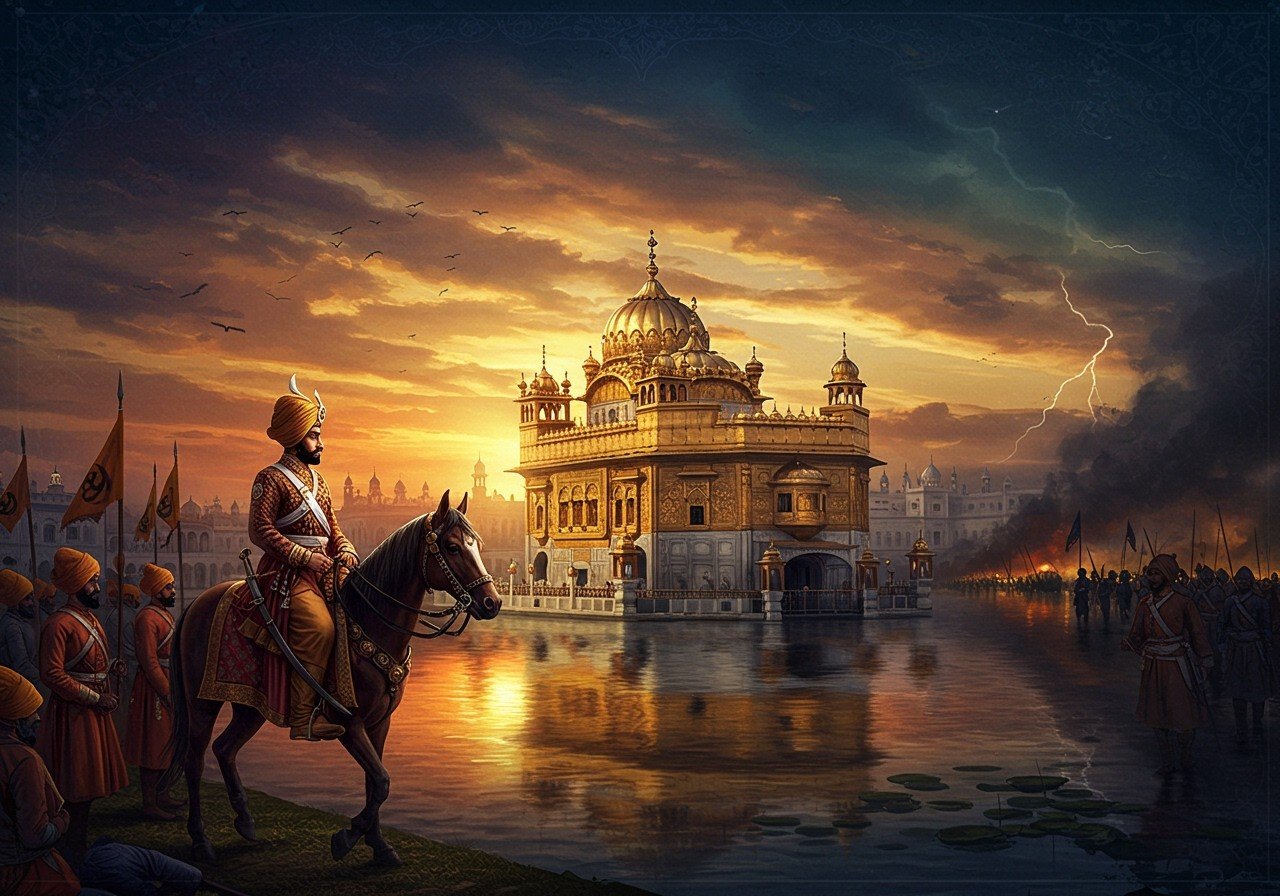
The Sikh Empire, a powerful force in the 19th-century Indian subcontinent, left an enduring legacy. Founded by the charismatic Maharaja Ranjit Singh, it epitomized Sikh strength and administrative prowess. This blog delves into the empire’s captivating history—its ascent, expansion, and eventual decline.
The Genesis of the Sikh Empire (1799)
The Sikh Empire emerged from Punjab’s socio-political landscape in the late 18th century. The foundation was laid by the Sikh Confederacy, uniting various Sikh misls (clans). Guru Gobind Singh’s formation of the Khalsa in 1699 militarized the Sikh community. Ranjit Singh’s capture of Lahore in 1799 marked the empire’s formal beginning. Strategic alliances and favorable socio-economic conditions fueled its rise.
Expansion and Consolidation under Ranjit Singh
Maharaja Ranjit Singh spearheaded significant expansion. Military campaigns brought regions like Multan, Kashmir, and parts of Afghanistan under Sikh rule. His effective administration included land reforms and revenue systems, establishing a strong centralized government. He also contributed to cultural landmarks like the Golden Temple in Amritsar and maintained diplomatic ties with the British and other kingdoms.
The Zenith of Sikh Power (Early 19th Century)
The empire reached its peak in the early 1800s, extending beyond Punjab into parts of modern-day Pakistan and northern India. The formidable Khalsa army showcased Sikh military might. Stable administration and trade fostered economic prosperity. A cultural renaissance flourished, with patronage of arts, literature, and education. Social policies championed religious tolerance and communal harmony.
Decline and Dissolution (1839-1849)
Despite its strengths, internal and external pressures led to the empire’s decline. Ranjit Singh’s death in 1839 triggered succession crises and internal conflicts among the Sikh nobility. The expanding British East India Company posed a growing threat. The First Anglo-Sikh War (1845-1846) and the Second Anglo-Sikh War (1848-1849) proved disastrous, culminating in the Treaty of Lahore (1846) and Punjab’s annexation by the British in 1849.
The Enduring Legacy
Though short-lived, the Sikh Empire’s impact on the subcontinent remains profound. It demonstrated the Sikh community’s unity and strength under visionary leaders. Its contributions to military, governance, and culture are a source of pride. The Golden Temple stands as a powerful symbol of the empire’s grandeur. The empire’s rise and fall offer valuable lessons in governance, diplomacy, and resilience.
Exploring the Sikh Empire: Common Questions
What led to the downfall of the Sikh Empire? Several factors contributed to the decline: internal power struggles after Maharaja Ranjit Singh’s demise, the growing influence of the British East India Company, and ultimately, defeat in the Anglo-Sikh Wars.
What was the Sikh Empire’s geographical extent at its peak? At its height in the early 19th century, the empire encompassed a significant portion of northwest India, including Punjab, Kashmir, and parts of present-day Pakistan and Afghanistan.
What is the significance of 1799 in the history of the Sikh Empire? This year marks a pivotal moment: Maharaja Ranjit Singh’s conquest of Lahore, solidifying his authority and laying the foundation for the empire’s establishment.
Honoring Sikh Heritage with Poojn.in
Poojn.in recognizes the profound connection between Sikh history and spiritual practices. For those interested in learning about or commemorating the Sikh Empire, we offer a curated selection of items for traditional observances:
- Incense Sticks: Create a reverent ambiance with our traditional incense sticks, perfect for personal reflection or communal prayers.
- Diyas (Oil Lamps): Illuminate your space with the warm glow of diyas, symbolizing spiritual enlightenment and dispelling negativity. Available in various materials and designs.
- Spiritual Sculptures: Find beautifully crafted murtis (statues) of revered figures, adding a touch of devotion to your home or prayer space. Explore our diverse collection.
These authentic products are thoughtfully chosen to uphold the sanctity of Sikh traditions. Explore our complete collection at Poojn.in.
Explore related articles on Sikh history and culture:
- Kandariya Mahadeva Temple: Religious Importance and History
- Khajuraho and Kandariya Mahadeva: A Cultural Heritage Journey


